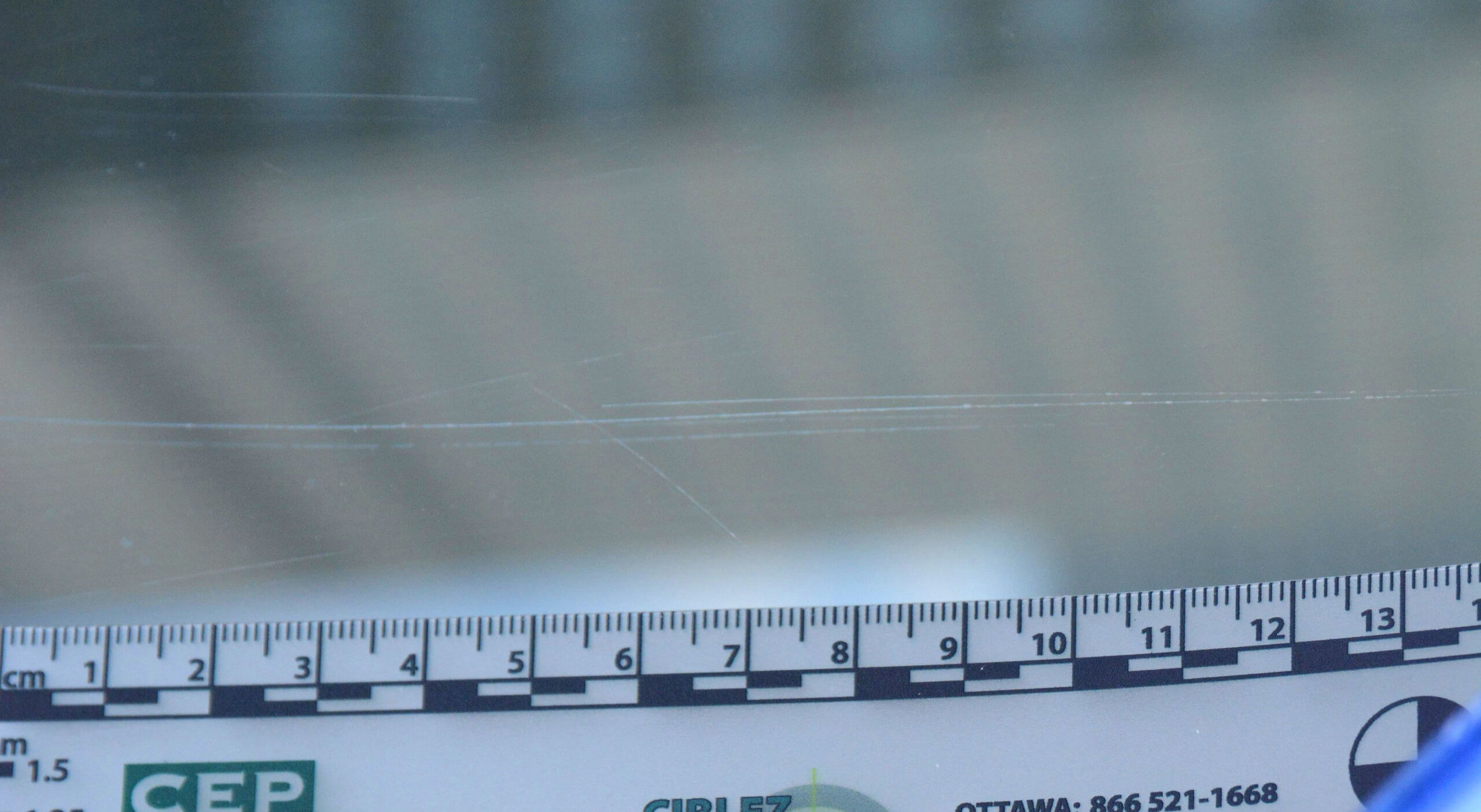Glass is everywhere around us, not only in the doors and windows of our homes, but also commonly used in very important architectural applications, such as curtain walls for high-rise buildings. Forensic investigators are frequently assigned to work on projects involving damage to glass or injuries caused by broken glass. Sometimes they even have to turn into Sherlock Holmes to carry out their investigations! Basic composition, brief descriptions of the different types of glass available on the market, probable failures and the role of the forensic investigator: this article provides a full overview concerning glass.

The Composition of Glass
Glass is an amorphous solid, which means it is a material with no ordered atomic structure. The most common type, soda lime glass, is mainly composed of silicon dioxide (SiO2), sodium oxide (soda – Na2O) and calcium oxide (lime – CaO).
Various additives and heat treatments are used to modify the optical, chemical and mechanical properties of the glass. In addition, coatings can also be applied to add some properties. One example is low emissivity (Low-E) glass, which is a clear thermal glass with a thin coating that allows outside light to pass through while blocking heat radiation.
Types of Glass for Buildings
There are several types of glass commonly used in buildings. The National Building Code sets out certain specific glass-related requirements. Here is a short list of most common types of glass used and their properties.
Float Glass
- The most standard type of glass;
- Made by floating molten glass on a bed of molten tin;
- Brittle glass with relatively poor mechanical properties. It shatters into large fragments, creating a high risk of injury if an impact occurs.
Tempered Glass
- As its name suggests, this glass undergoes a thermal tempering treatment. The compressive stresses on the surface are very high;
- Its mechanical properties are about four times better than float glass and it is extremely impact resistant;
- Tempered glass breaks into small fragments. The risks are therefore much lower in the event of an impact. For this reason, tempered glass is considered to be a type of safety glass.
Heat-Strengthened Glass
- Similar to tempered glass, but with lower compressive stresses;
- Its mechanical properties are about twice those of float glass;
- Shatters into large fragments and is therefore not considered safety glass.
Laminated Glass
- Composed of different layers of glass and laminated polymer. The inner polymer film prevents the glass fragments from separating in the event of an impact. For this reason, it is classified as safety glass;
- Limited use in the building industry because it is more expensive;
- Commonly used for car windshields.
Wired Glass
- A wire mesh is inserted into the center of the glass panel during manufacturing;
- This mesh is mainly used to hold the glass in place in the event of a fire, but it does not make it stronger if an impact occurs;
- This material is commonly involved in injuries in public buildings. Previously considered to be a safety glass, wired glass lost this designation in Canada in 2017.
Scratches and other failures
Scratches
Scratches are one of the most common failures involving glass that forensic experts see. For these investigations, the expert has to put on his detective hat. After collecting witness statements, they must reconstruct the sequence of events in order to determine who is responsible for the scratches and how they occurred. Taking into account the sometimes-failing memory and the often contradictory versions…
Sometimes, scratches can simply be caused by inappropriate cleaning method. For example, tempered glass and heat-strengthened glass are more prone to damage from blades (scrapers). This is because they can break-off of very small glass particles deposited during manufacturing, which can become lodged under the scraper and scratch the glass when the blade is used.
This type of damage can result in very large losses when hundreds of windows have to be replaced in a residential high-rise building, for example. It is important to note that there is a Canadian standard for assessing damage and evaluating whether the panels need to be replaced.
Other failures
In addition to scratches, forensic investigators are also asked to intervene in cases of broken windows, some of which involve people injured by shards or fragments of glass.
Take, for example, the breakage of a shop window following the use of dark decals. Depending on the type of glass, decals can cause thermal stress, which can cause glass to break. In this case, replacement with tempered glass may be advisable, as the latter is much more resistant and safer.
Some cases involving a large loss may be taken to court and become very significant. Of particular interest is the 2016 Supreme Court of Canada decision in the Ledcor Construction Ltd. case.[1]
The Role of the Forensic Investigator
When a forensic investigator is called upon to assist in a case involving glass, he or she first visits the site to take photographs and document the circumstances surrounding the event.
CEP Forensic can provide professional drones and Transport Canada certified pilots, which allows the inspection of building facades without the need to use a lift platform or go inside the building. It is then possible to perform 3D modelling of the building and take precise measurements on this model. Where possible, samples are taken for close examination and some laboratory testing. An analysis of the available documentation, including the applicable Canadian standards, is carried out to determine whether the glass in question should be replaced. A report containing observations, conclusions and other information is available should it be requested.
[1] https://scc-csc.lexum.com/scc-csc/scc-csc/en/item/16121/index.do
